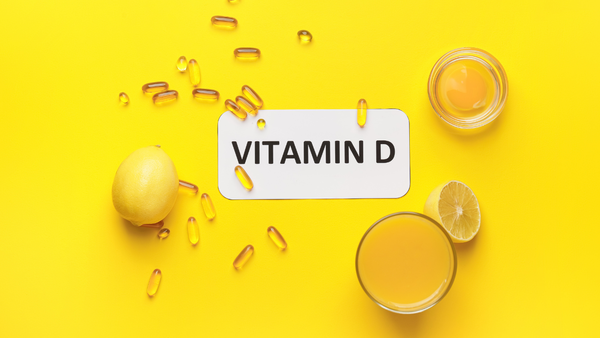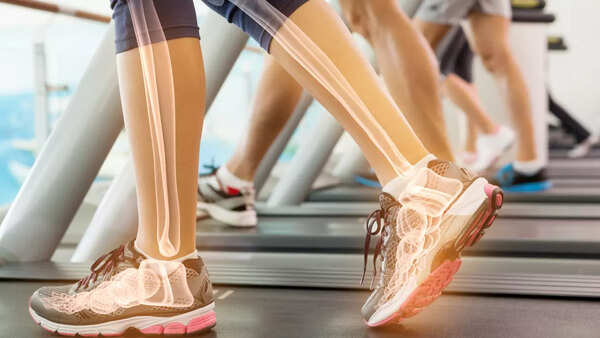Fitness trends often emphasize muscle building and weight loss, yet bone health frequently takes a backseat. However, neglecting your skeletal system can significantly impact your quality of life, particularly as you age. The risk of conditions like osteoporosis, which can lead to fractures and reduced mobility, increases with time. The good news is that proactive measures can be taken at any age to strengthen bones and safeguard them for the future. Individuals in their 20s can especially benefit from prioritizing bone health now.
Here are five effective strategies to enhance bone density and minimize the risk of osteoporosis.

Calcium and vitamin D are indispensable for maintaining robust bone health. Calcium serves as the fundamental building block, contributing to bone density. Meanwhile, vitamin D facilitates calcium absorption. Deficiencies in either nutrient can compromise bone density, elevating the likelihood of fractures and conditions like osteoporosis.
Excellent sources of calcium include dairy products like milk and yogurt, leafy green vegetables, and fortified foods. Vitamin D, often dubbed the "sunshine vitamin," can be obtained through sources such as fatty fish, egg yolks, or supplements. Moreover, the body possesses the remarkable ability to produce vitamin D naturally upon exposure to sunlight.

Protein isn't solely for muscle development; it's also crucial for bone health. Collagen and amino acids derived from protein constitute approximately half of the bone's volume.
Incorporate lean meats, fish, eggs, beans, and tofu into your diet to augment protein intake. Research suggests that pairing protein with calcium-rich foods amplifies the benefits. However, it's essential to monitor protein consumption, as excessive intake may strain the kidneys in certain individuals.

One of the most impactful actions you can take for your bones is to abstain from smoking and excessive alcohol consumption. These habits can undermine bone health, as smoking impairs blood flow to the bones and hinders their capacity for repair and regeneration. A 2022 study revealed that smoking correlates with a 40% increase in fracture risk.
Alcohol consumption can interfere with calcium absorption and bone formation. Eliminating smoking and moderating alcohol intake can substantially mitigate these risks.

Exercise is a potent ally in promoting bone health. However, rather than engaging in haphazard exercises, concentrate on activities that specifically enhance bone strength. Weight-bearing exercises like walking, jogging, or dancing can stimulate bone formation.
Resistance training, such as lifting weights or utilizing resistance bands, fortifies bones by applying stress that triggers growth. Balance and agility exercises, including tai chi or yoga, can reduce the risk of falls, which are a primary cause of osteoporosis-related fractures. Aim for approximately 30 minutes of weight-bearing, resistance training, or agility exercises two to three times per week.
Early screening can identify osteoporosis before fractures occur. Individuals with risk factors like a family history, early menopause, or prolonged steroid use should consult their physician regarding a bone density test. Routine screenings are generally recommended for women over 65 and men over 70, but younger adults with risk factors may necessitate earlier testing. Timely detection can enhance treatment outcomes, while lifestyle modifications can arrest bone loss.
Disclaimer: The information provided herein is intended for general knowledge purposes only and is not a substitute for professional medical advice.
Newer articles
Older articles
 Hetmyer's Heroics: Orcas Stun MI New York with Last-Ball Six in Record-Breaking MLC Chase
Hetmyer's Heroics: Orcas Stun MI New York with Last-Ball Six in Record-Breaking MLC Chase
 Android Users Face Critical Security Risks: Update Your Devices Now, Warns Government Agency
Android Users Face Critical Security Risks: Update Your Devices Now, Warns Government Agency
 Greg Chappell Hails Rishabh Pant's "Revolutionary" Batting, Likens Him to Gilchrist
Greg Chappell Hails Rishabh Pant's "Revolutionary" Batting, Likens Him to Gilchrist
 Dog-Sized Dinosaur Fossil Unearths New Insights into Prehistoric Life Alongside Giants
Dog-Sized Dinosaur Fossil Unearths New Insights into Prehistoric Life Alongside Giants
 West Indies Captain Chase Slams Umpiring After Test Loss, Demands Accountability
West Indies Captain Chase Slams Umpiring After Test Loss, Demands Accountability
 IRCTC's AI Chatbot, AskDisha 2.0, Streamlines Train Ticket Booking, Refunds & Information
IRCTC's AI Chatbot, AskDisha 2.0, Streamlines Train Ticket Booking, Refunds & Information
 Freestyle Chess India Event Scrapped Due to Sponsorship Issues; Carlsen Absence Confirmed
Freestyle Chess India Event Scrapped Due to Sponsorship Issues; Carlsen Absence Confirmed
 Moto G54 Gets Significant Price Drop in India: Check Out the New Affordable Price Tag
Moto G54 Gets Significant Price Drop in India: Check Out the New Affordable Price Tag
 New Zealand Cricket Announces Packed 2025-26 Home Schedule Featuring Australia, England, West Indies & South Africa
New Zealand Cricket Announces Packed 2025-26 Home Schedule Featuring Australia, England, West Indies & South Africa
 Converting JPG to PDF: A Comprehensive Guide for Preserving Image Quality and Ensuring Accessibility
Converting JPG to PDF: A Comprehensive Guide for Preserving Image Quality and Ensuring Accessibility